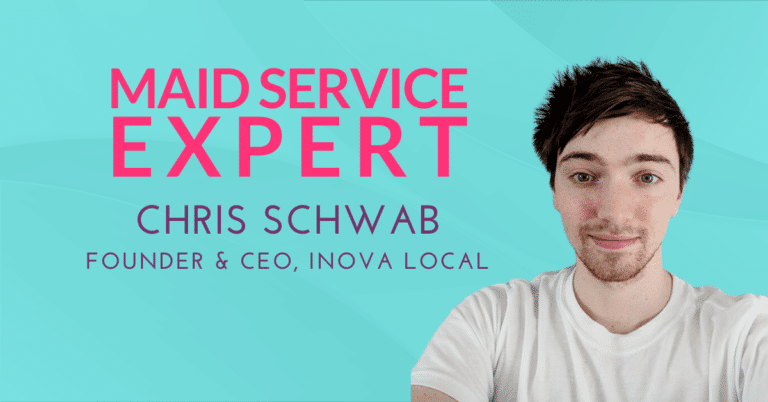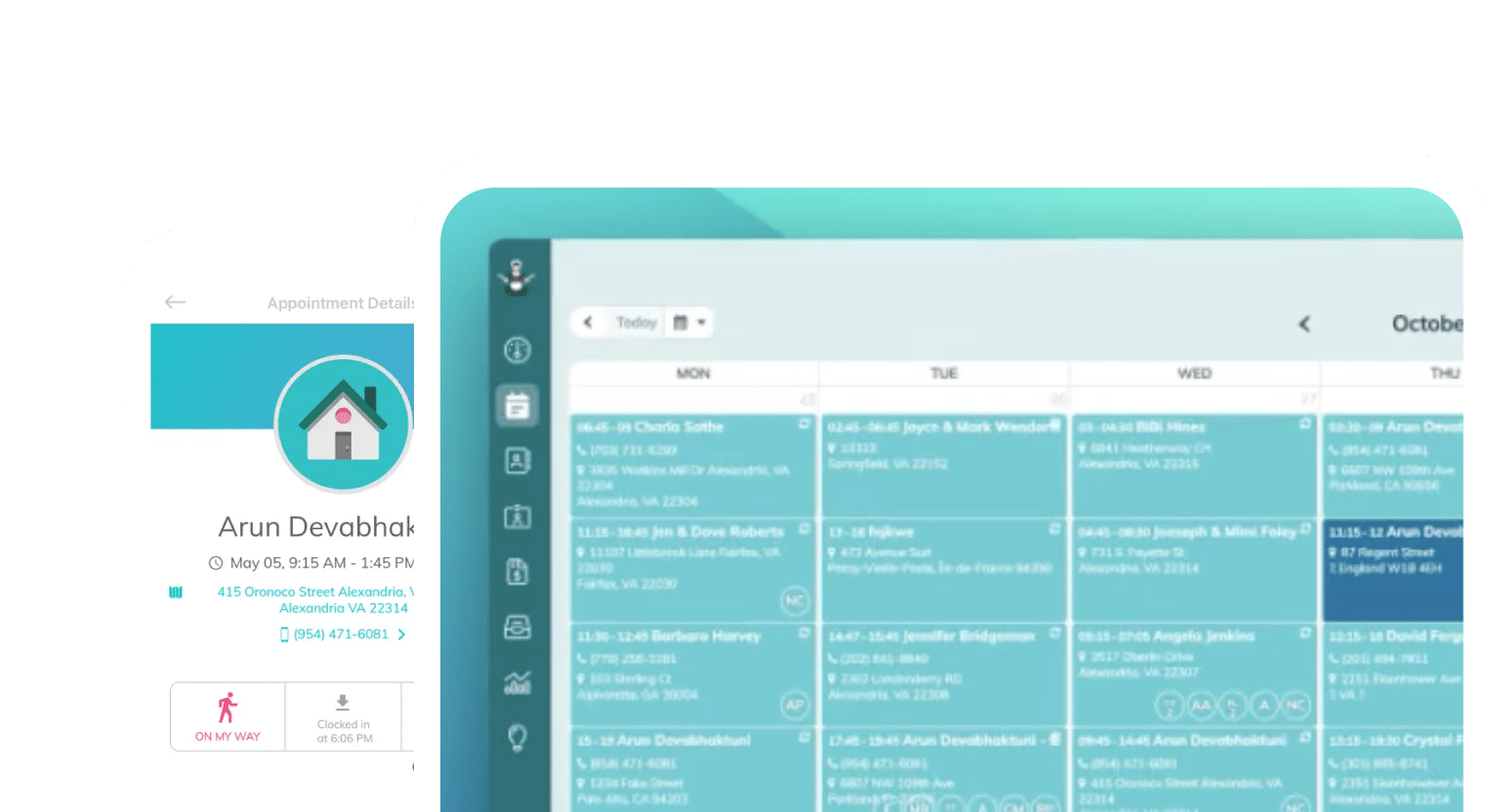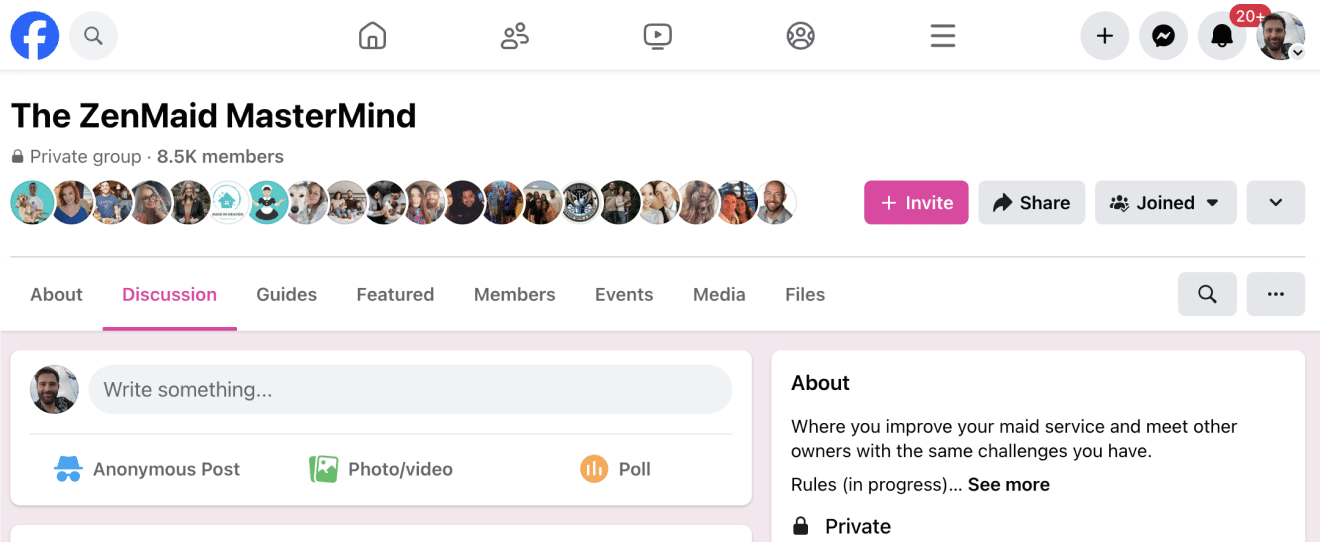It’s tough handling every call, every schedule, and every little task yourself. And at some point, something’s going to give if you don’t hire help. That’s where virtual assistants (VAs) come in — a reliable way to extend your reach without stretching yourself too thin in your cleaning business.
I’m Chris Schwab. Throughout my time in the cleaning industry, I’ve come to learn that mastering delegation can make or break your maid service. At my company, Inova Local, we specialize in pairing cleaning business owners with dedicated virtual assistants to streamline operations and enhance efficiency.
Today, I’m sharing some practical strategies for effectively using virtual assistants in your cleaning business. This guide is packed with insights from my own experiences — covering everything from setting up standard operating procedures to expanding your VA team.
If you’re not familiar with what a cleaning business virtual assistant is, I recommend checking out these resources first:
- Virtual Assistants: How They Can Transform Your Maid Service
- Does Your Maid Service Need A Virtual Assistant?
- How To Find A Quality Virtual Assistant For A Maid Service
Originally written as a three-part series for the ZenMaid newsletter, these tips are designed to help you get the most out of your virtual assistant without the trial and error I went through. Ready?
The Foundation of Effective VA Delegation
The art of VA delegation is all about creating a seamless workflow that maximizes productivity and ensures quality. Here’s a detailed breakdown of my 6-step delegation process tailored for cleaning business owners working with a VA for the first time.
1. Document Every Procedure (SOPs)
Start with the basics. Create detailed Standard Operating Procedures (SOPs) for every task, no matter how small. This includes handling customer calls, managing complaints, and processing payments. Clear documentation is the bedrock of effective delegation. These SOPs should be short, simple, and clear to follow – aim to make them bite-sized by making short training videos using Loom or turning them into simple checklists.
2. Categorize and Organize
Once you have your SOPs ready, organize them into key business areas: Marketing, Sales, and Operations (which includes hiring). This clarity will not only aid in delegation but also highlight areas ripe for automation. The goal here is to develop a short playbook for each area of the business that you can expand naturally over time. It will also save you countless hours if you ever have to train a replacement.
3. Automation vs. Personal Touch
Identify tasks that can be automated for efficiency, but also recognize when a personal touch is necessary. Automated systems can save time, but they can also alienate customers. Never forget that cleaning businesses are about people first, and profit second. For example, you do want to automate job application filtering in your cleaner hiring process but don’t want to automate phone calls (like a bank does, ugh!) Ultimately, it’s about finding the right balance for your business as you grow and step out of your daily office work.
4. Assign Roles and Responsibilities
At Think Maids, we have a clear division of labor: I focus on high-level relationship building, acquisitions, and advanced marketing. We have a front-facing VA who manages customer-facing tasks, and another VA who handles backend operations in our main location. This has served us well as we’ve scaled, and we now duplicate this across other locations. Determine which tasks you will oversee and delegate the rest accordingly.
5. Communication Is Key
Establish the most effective communication channels between you and your VA. For quick tasks and updates, a simple messenger app like WhatsApp or Slack provides an immediate and efficient solution. When outlining daily or weekly tasks, opt for a simple yet robust task management tool like Todoist or Trello, which allows for easy prioritization and task tracking.
6. Prioritize Wisely
Implement a straightforward prioritization system for all tasks (the ABCDE method works well). This helps both you and your VAs understand the urgency and importance of each task, ensuring that critical tasks are completed in a timely manner.
Batching Your Virtual Assistant’s Tasks
One of the most effective strategies I’ve implemented in our office is task batching. By grouping similar tasks and assigning specific times for their completion, you minimize disruption and maximize focus. This approach is particularly effective for managing routine tasks without letting them overwhelm your day. For example, at Think Maids, we have a batch period for start of day (8-9am) and end of day (4-5pm) tasks.
For a more visual walkthrough of these concepts, I encourage you to watch my video on YouTube, where I touch on these principles.
Running Effective Team Meetings
Leading productive team meetings is crucial in maintaining the pulse of your cleaning business and ensuring everyone is aligned with your goals. Here’s how you can conduct efficient and effective meetings.
1. Prepare Before the Meeting
Ensure the following to virtually guarantee a successful meeting each time:
- Everyone knows the agenda ahead of time – post it to your company communication channel (e.g. Slack) beforehand.
- Have a clear start and end time for the meeting – we like to hold our weekly meetings on Tuesday at 5:00pm and end them no later than 5:45pm.
- Structure the meeting to flow smoothly from one topic to the next. Here’s the template that I use.
2. Meet Weekly
Ideally, hold meetings once a week to keep everyone updated without causing meeting fatigue. If it’s a particularly busy week, a second meeting on Friday can help wrap up the week and set the stage for the next. Regular meeting days I recommend are either Tuesday or Friday based on your operational needs.
Fostering Accountability and Independence
Empowering your VAs to work independently while maintaining accountability is essential for scaling your operations. Here’s how you can instill confidence and trust in your team:
Screw-up Fund
Assign a weekly discretionary fund your VAs can use to resolve small issues on their own ($100-$250 is a good starting point). This fund allows them to handle minor problems without needing your direct involvement every time, fostering a sense of ownership and responsibility.
Learning from Mistakes
Encourage your VAs to make decisions, even if they sometimes lead to mistakes. For significant errors, discuss them together, identify learning points, and update your SOPs accordingly. This not only improves your processes but also builds a learning culture within your team.
Crucial Conversations
Have three vital conversations with your VAs upfront to set the foundation for your work together:
- Communication: Establish how you will communicate effectively, whether through daily check-ins, weekly summaries, or real-time messaging.
- Emergency Protocols (The Uh-Oh Protocol): Define clear steps for handling emergencies, ensuring they know when to escalate issues to you.
- Roles and Responsibilities: Clarify what tasks you will handle personally and what your VAs are responsible for managing.
➡️ Grab a copy of my Meeting Agenda template right here.
Adopting a Mentorship Mindset
Transition from being just a manager to becoming a mentor. This shift in mindset is crucial for fostering an environment where your VAs are encouraged to grow into leadership roles. As a mentor, you focus on developing your team’s capabilities, which in turn drives the growth of your business.
Here’s how I adopt a mentorship mindset:
- Empower Your VAs: Encourage your VAs to take on more responsibilities as they grow. Support them in this process by providing regular feedback and opportunities to develop new skills.
- Focus on Growth: When you invest time in mentoring, the returns are exponential. Your team’s growth leads to enhanced capacity for handling more complex aspects of your business, paving the way for expansion and efficiency.
Maximizing Efficiency Through Strategic Task Allocation
Efficiency isn’t just about doing things faster; it’s about doing the right things effectively.
- Align Tasks with Strengths: Assign tasks based on the strengths and expertise of each team member. This ensures tasks are completed efficiently and team members are engaged in work that highlights their skills.
- Clear Communication: Maintain open lines of communication. Outline the goals, expectations, and deadlines for each task clearly. This clarity helps prevent misunderstandings and keeps your team aligned toward common goals.
- Make Strategic Decisions: Place team members where they can make the biggest impact. Strategic task allocation maximizes your team’s overall productivity and reduces wasted time and resources.
Integrating a Second VA into Your Team
As your cleaning business grows, so does your need for support. Adding a second VA can help you manage the increased workload effectively. Here’s how I recommend doing it.
- Define Roles Clearly: Split duties between front-facing and back-facing tasks. Front-facing tasks might include customer interactions, follow-ups, and scheduling, while back-facing tasks might involve hiring, website management, and bookkeeping.
- Communicate Changes: Discuss with your existing VA how their role will evolve. Ensure they understand that while their tasks may shift, their value and contribution to the team remain significant.
- Plan for Scalability: As you add more VAs, consider assigning them to specific departments such as Sales, Customer Relations, or Team Management. This departmental structure not only organizes your operations but also simplifies the integration of new team members as your team continues to grow.
Final Thoughts
Here’s the truth: No matter how hard you work, there are only so many hours in the day, and you can’t do it all alone. That’s why effective delegation, especially through skilled virtual assistants, is not just a convenience — it’s a necessity. Utilizing VAs wisely can turn the overwhelming task of managing a maid service into a more manageable and successful operation. Your future self will thank you for the freedom and success it brings.

 Frustrated with your scheduling? Try the easiest-to-use calendar app, made by and for maid service owners.
Frustrated with your scheduling? Try the easiest-to-use calendar app, made by and for maid service owners.










